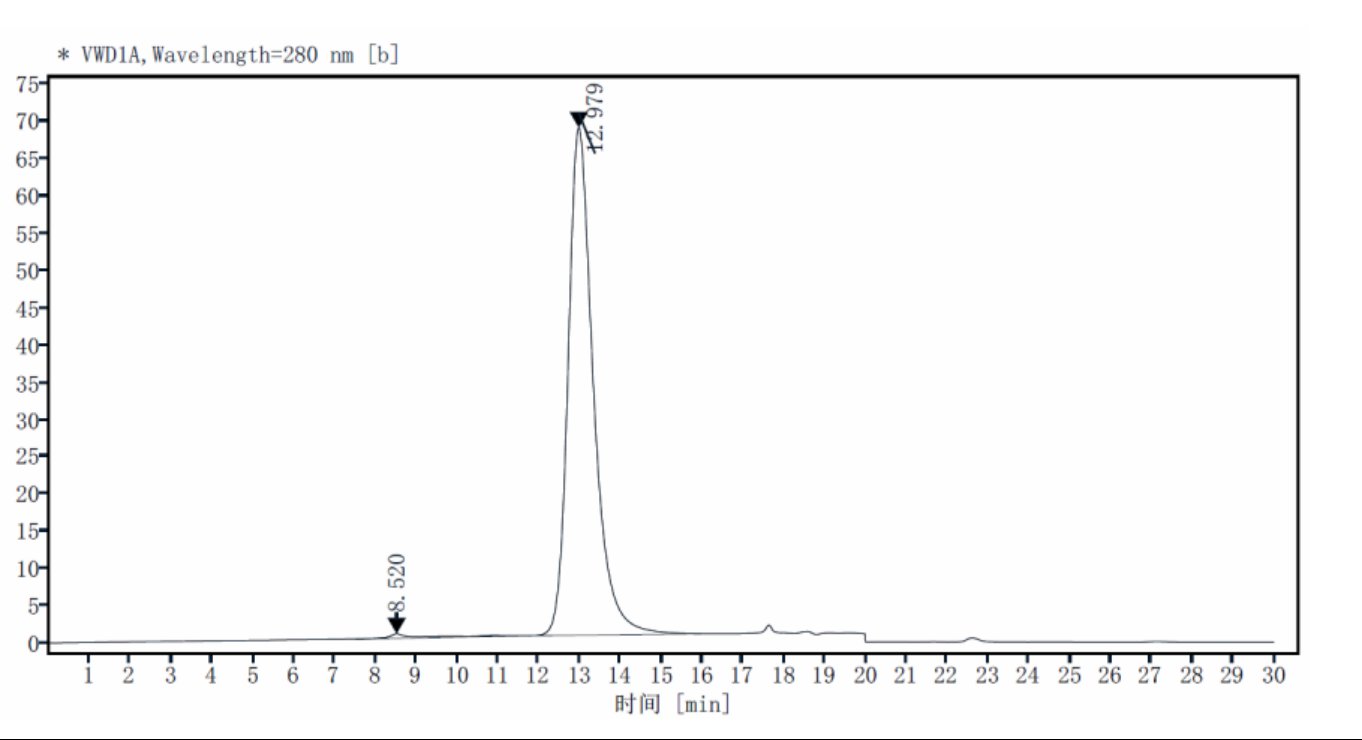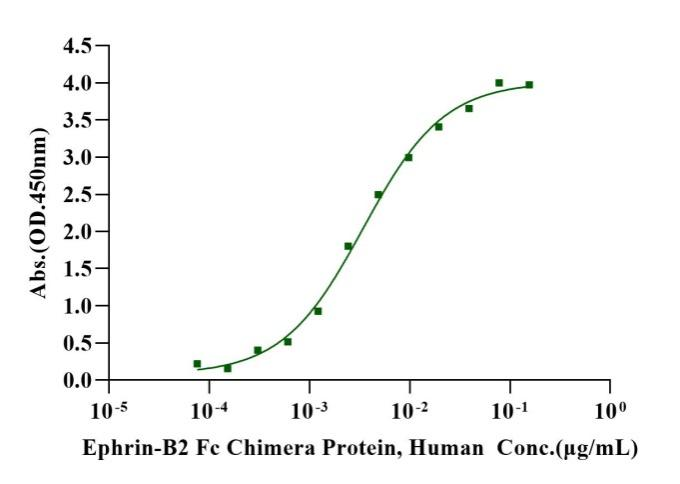70-75kDa (Reducing)
Reconstitute at 0.1-1 mg/ml according to the size in ultrapure water after rapid centrifugation.
1.Fuller, T. et al. (2003) J. Cell Sci. 116:2461. 2. Noren, N.K. et al. (2004) Proc. Natl. Acad. Sci. 101:5583. 3. Wang, Z. et al. (2002) Blood 99:2740. 4. Inada, T. et al. (1997) Blood 89:2757.
Ephrin type-B receptor 4(EPHB4) is also known as HTK, MYK1 and TYRO11,is a member of Eph family. The Eph family of receptors are divided into 2 groups based on the similarity of their extracellular domain sequences and their affinities for binding ephrin-A and ephrin-B ligands. Ephrin receptors make up the largest subgroup of the receptor tyrosine kinase (RTK) family. EphB4 is expressed preferentially on venous endothelial cells (EC) and inhibits cell-cell adhesion, chemotaxis, and angiogenesis. Opposing effects are induced by signaling through Ephrin-B2 expressed on arterial EC: adhesion, endothelial cell migration, and vessel sprouting. EphB4 singaling contributes to new vascularization by guiding venous EC away from Ephrin-B2 expressing EC. Ephrin-B2 signaling induces arterial EC to migrate towards nascent EphB4 expressing vessels. The combination of forward signaling through EphB4 and reverse signaling through Ephrin-B2 promotes in vivo mammary tumor growth and tumor-associated angiogenesis. EphB4 promotes the differentiation of megakaryocytic and erythroid progenitors but not granulocytic or monocytic progenitors.
1μg (R: reducing condition, N: non-reducing condition).

The purity of Biotinylated EphB4 His&Avi Tag, Human is greater than 95% as determined by SEC-HPLC.

Immobilized Biotinylated EphB4 His&Avi Tag Protein, Human (Cat. No. UA010917) at 2 μg/mL on Streptavidin precoated (0.5μg/well) plate, can bind Ephrin-B2 Fc Chimera Protein, Human (Cat. No. UA010160) with EC50 of 2.82-4.24ng/ml.